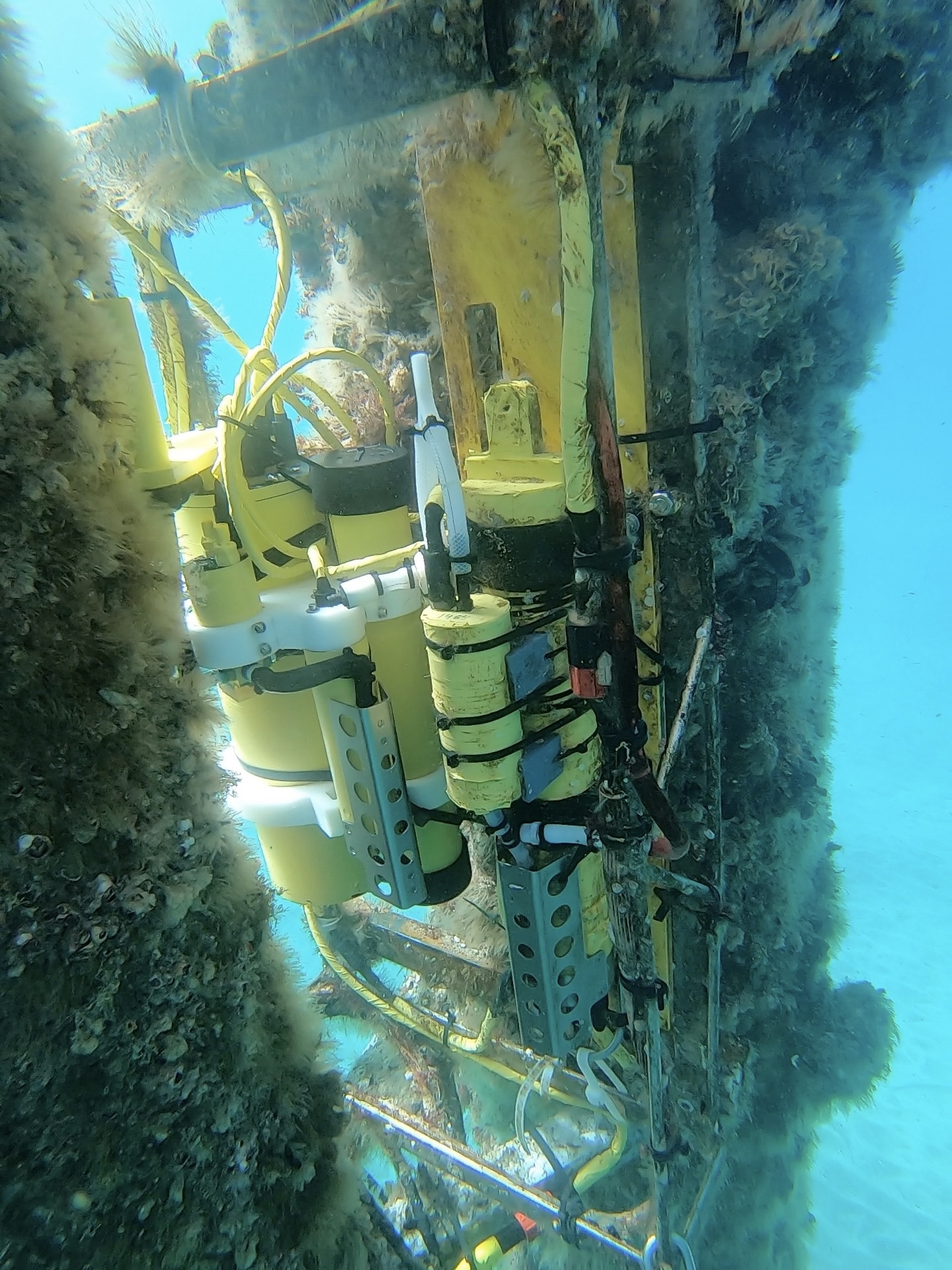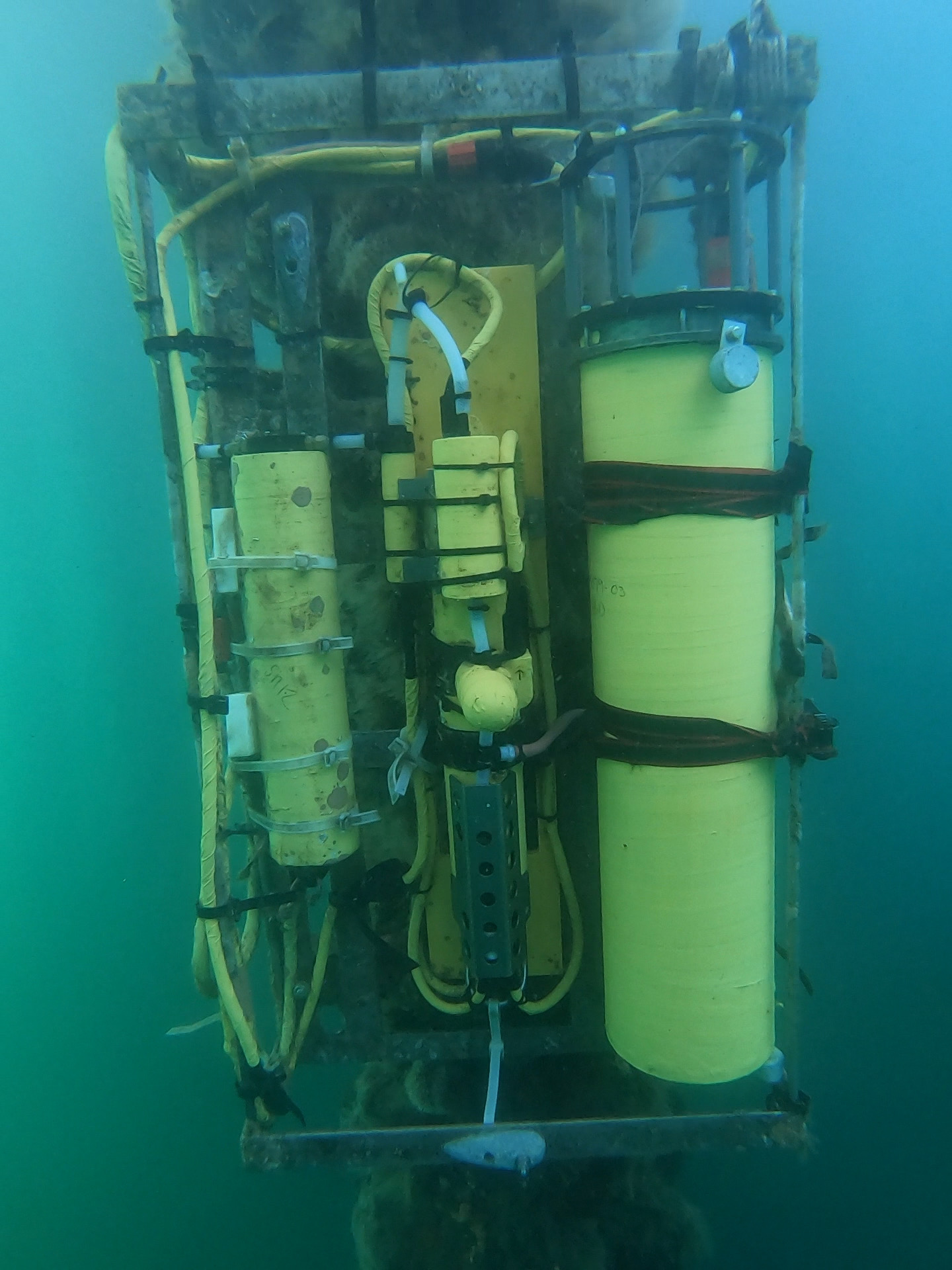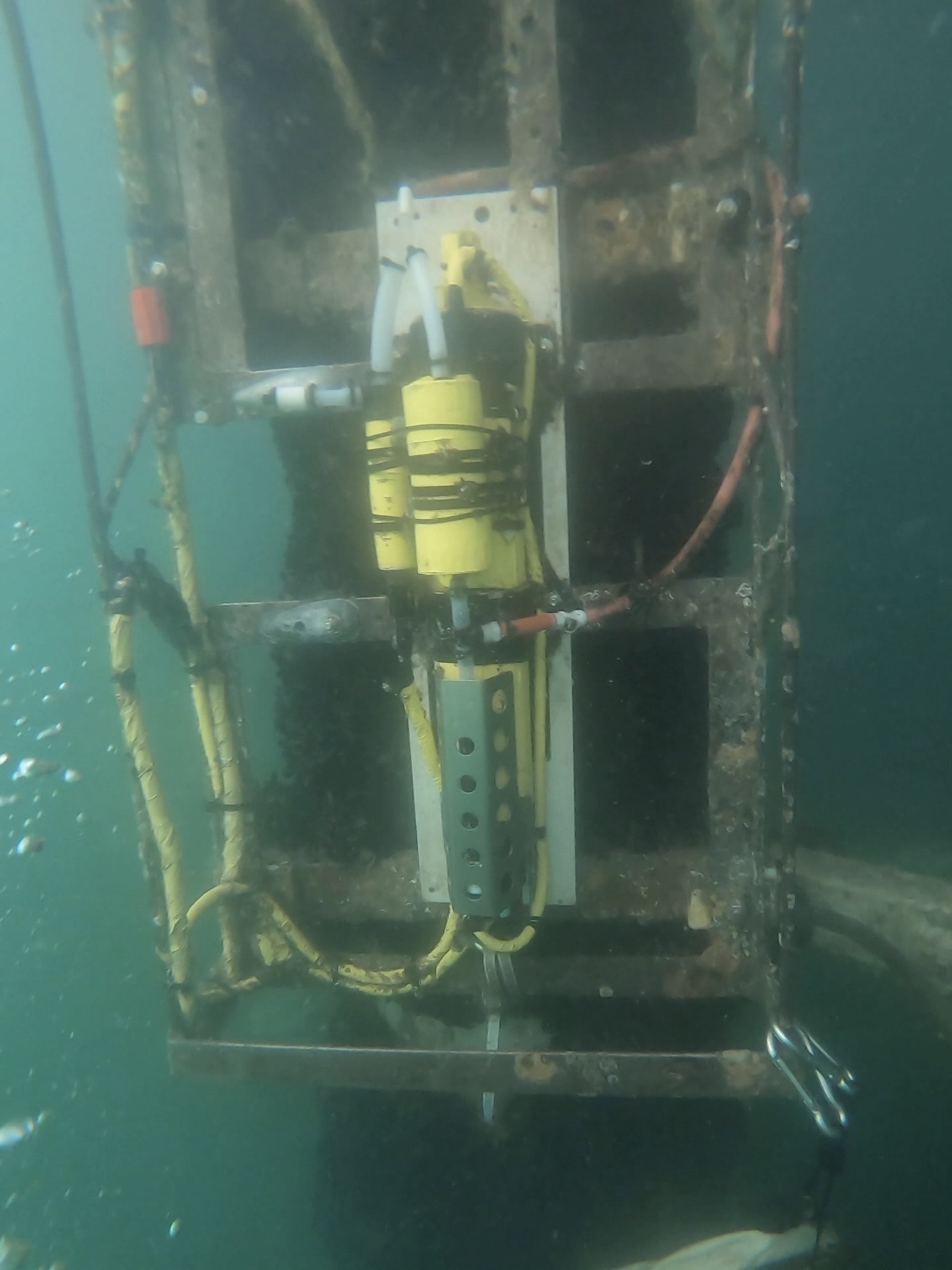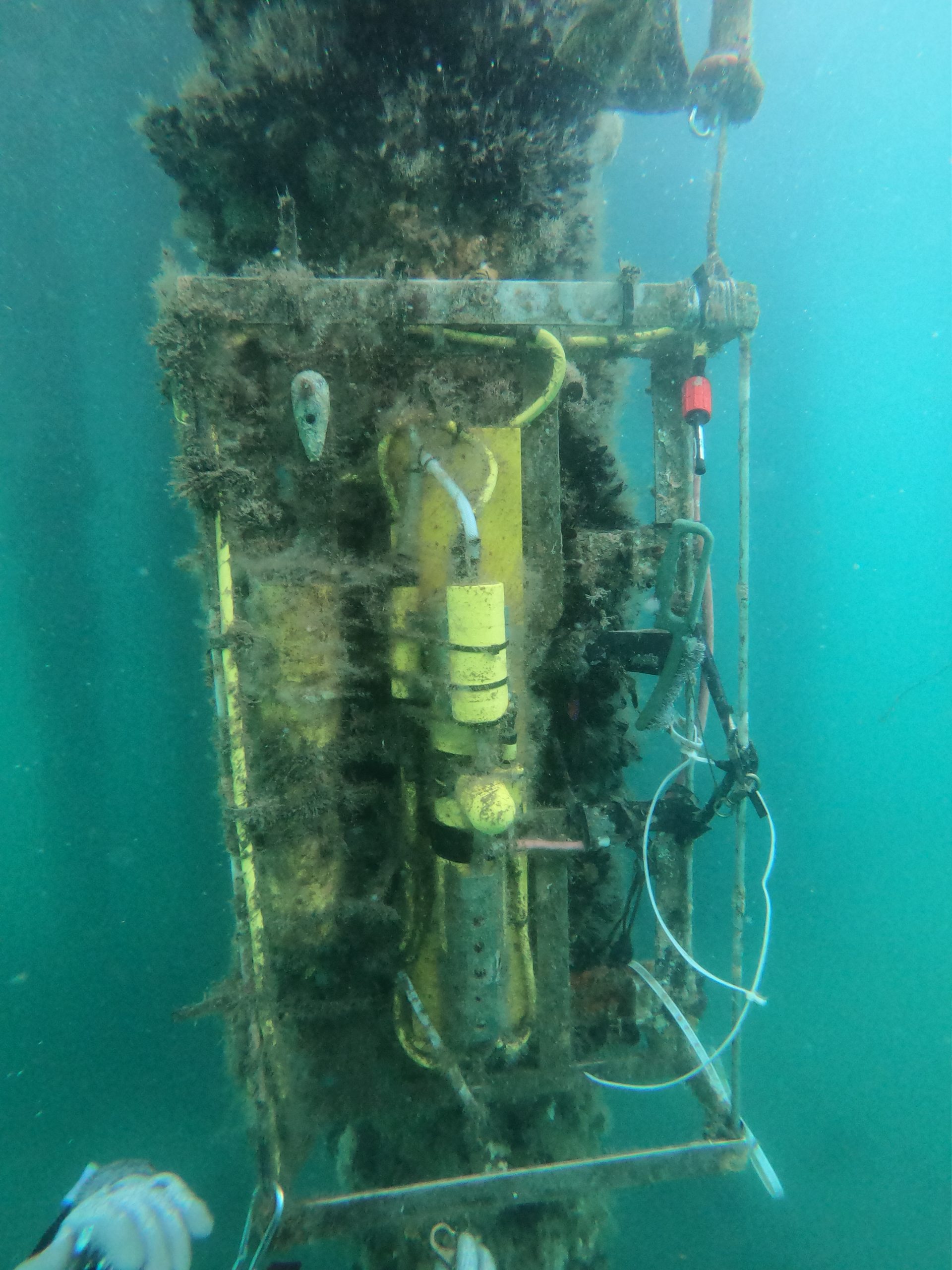Southern California Coastal Ocean Observing Systems (SCCOOS) Automated Shore Stations consist of a suite of oceanographic sensors that are attached to piers at several locations along the California coast. These automated sensors measure temperature, salinity, chlorophyll, pH, oxygen, and water level at frequent intervals in the nearshore coastal ocean. This data can provide local and regional information on mixing and upwelling, land run-off, and algal blooms.
Southern California Stations
Click on an image to be redirected to that stations data portal

Scripps Pier
La Jolla, CA
Current Sensors Deployed: Seabird SEB 16plus V2 SeaCAT, WETStar Fluorometer, ECO Triplet-w, Self Calibrating SeapHOx

Newport Beach Pier
Newport Beach, CA
Current Sensors Deployed: Seabird SEB 16plus V2 SeaCAT, SBE 63 Optical Dissolved Oxygen, WETStar Fluorometer, Seabird SeaFET V2, McLane Labs Imaging FlowCytobot
Monthly Cleanings
Divers from this lab service the oceanographic equipment at Scripps Pier and Newport Beach Pier once a month to reduce biofouling and remove sediment that has entered the system. California State University Northridge performs the monthly service to the Santa Monica Station and UCSB maintains the equipment at Sterns Wharf. The cleanings help maintain accurate data as well as increase the longevity of our instruments. Sensors are replaced approximately once a year, cleaned, and sent to Seabird Electronics for calibration.
For more information visit: Southern California Coastal Ocean Observing System





